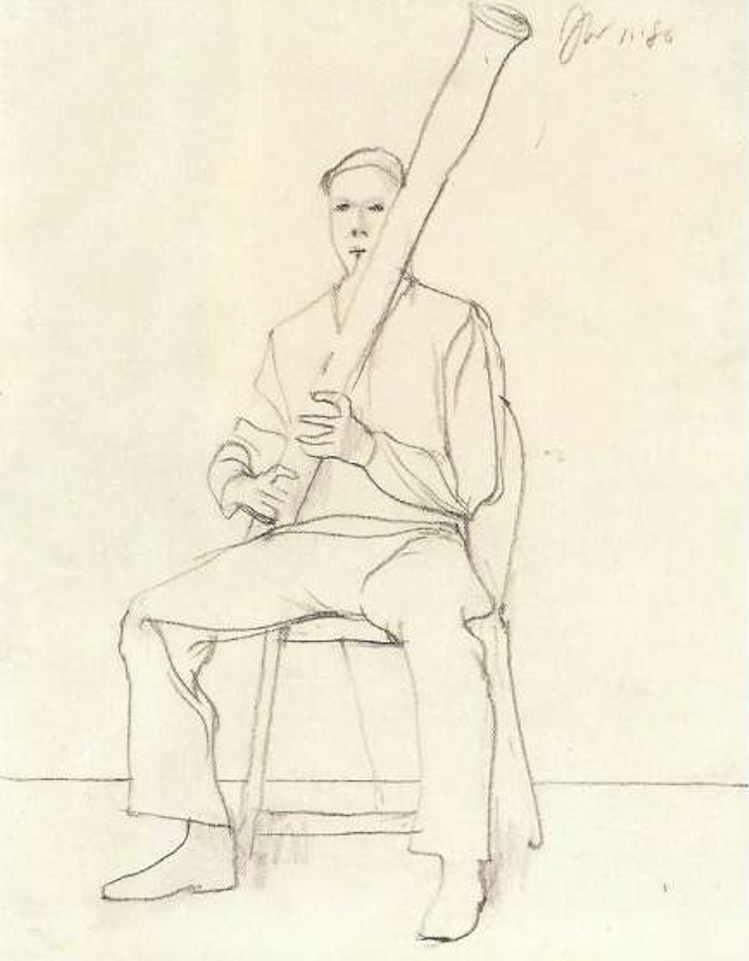Man with Blue Tie
1962 - Painting (Painting)
James Weeks
Both Head-Portrait with Red and Blue Background and Man with Blue Tie are classic examples of Weeks’ deftness of line, shape, and color. These two works illustrate his signature flattened style -a vast departure from figurative painting of the time- and hints of influence from modernist painters like Henri Matisse and Maynard Dixon, although with a somewhat darker tone. Both figures stare with with expressionless faces and hollow eyes. Weeks provides us with little visual information to distinguish the identities of these men. Are politicians, members of the jazz club scene that Weeks often depicted, or simply acquaintances that agreed to sit for him? Head-Portrait with Red and Blue Background and Man with Blue Tie are interesting examples of the Bay Area figurative painting movement in their contrast to the sunny landscapes of Elmer Bischoff and the abstract or non-objective works of Richard Diebenkorn.
James Weeks, born in 1922, was an important figure in the Bay Area figurative painter tradition, with contemporaries such as Richard Diebenkorn, Elmer Bischoff, and David Park. Diverging from the placid sunny landscapes and non-objective abstract painting that characterized Bay Area painting of the time, Weeks instead chose to depict aspects of American life in a different light. Jazz musicians, cloudy nightclubs, and sailing races filled Weeks monumental canvases, forever freezing these action-filled moments in paint. From the sixties onward Weeks also worked as an educator at the University of California and Boston University.
Colors:
Other works by: » James Weeks

© » KADIST
James Weeks
1962Both Head-Portrait with Red and Blue Background and Man with Blue Tie are classic examples of Weeks’ deftness of line, shape, and color...


